How to choose the best coffee beans
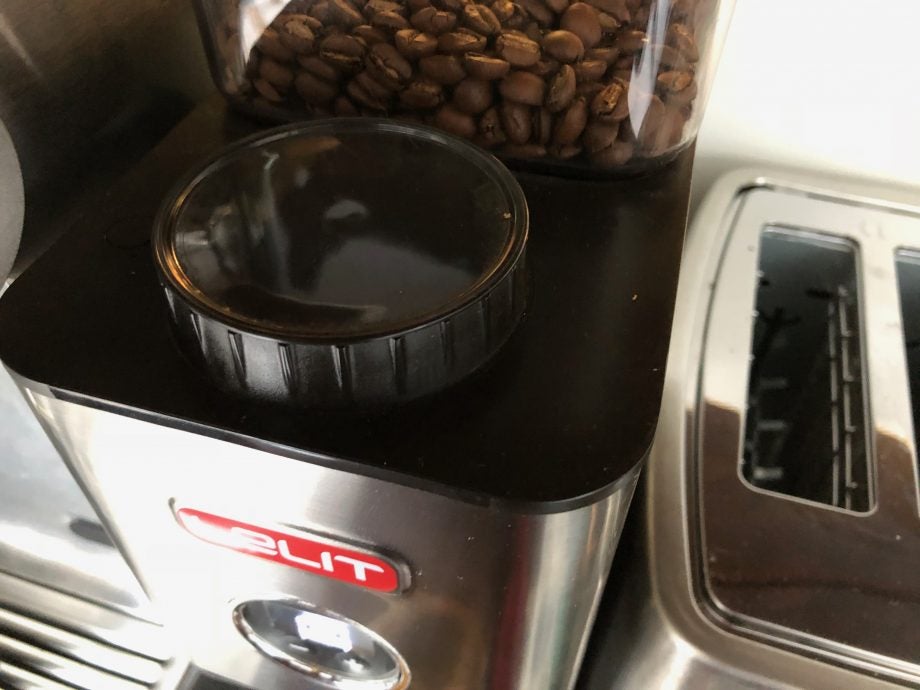
Coffee, as I’ve often said, is more like fine wine than any other drink. There’s a staggering amount of coffee available and, if you’ve just been feeding your coffee machine cheap beans from your local supermarket, it’s a bit like shopping in the bargain basement section for wine. Instead, you should be looking for the best coffee beans.
Buying high-quality beans can help you make the most out of your coffee machine: it can make a greater deal of difference than upgrading to one of our best coffee machine choices and still using cheaper beans.
In this guide, I’ll take you through the choice of beans available, the difference in roasts and how freshness has a part to play.
Best coffee beans – Arabica or Robusta?
The main choice when it comes to coffee is between the two varieties, Arabica and Robusta. You can read more about the differences in my guide, Robusta vs Arabica, but I’ve included the short version here: Robusta has more caffeine and less sugar than Arabica, but typically has more bitterness and less acidity. As such, as it’s either used in blends to give a richer, more intense taste, or cheap coffees, such as for the instant coffee blend.
Best coffee beans – Single origin or blend?
Single origin coffee uses beans from one location. Think of this as choosing a wine made with grapes of one variety from a single vineyard. High-quality coffee will typically come from a single origin estate.
Each type of single origin coffee presents a different flavour, each with its own subtleties. For example, Jamaican Blue Mountain, has a smooth and mellow aftertaste that sets it apart from other varieties. Opt for a Kenyan AA and you’ll get a rounded body with nutty flavour.
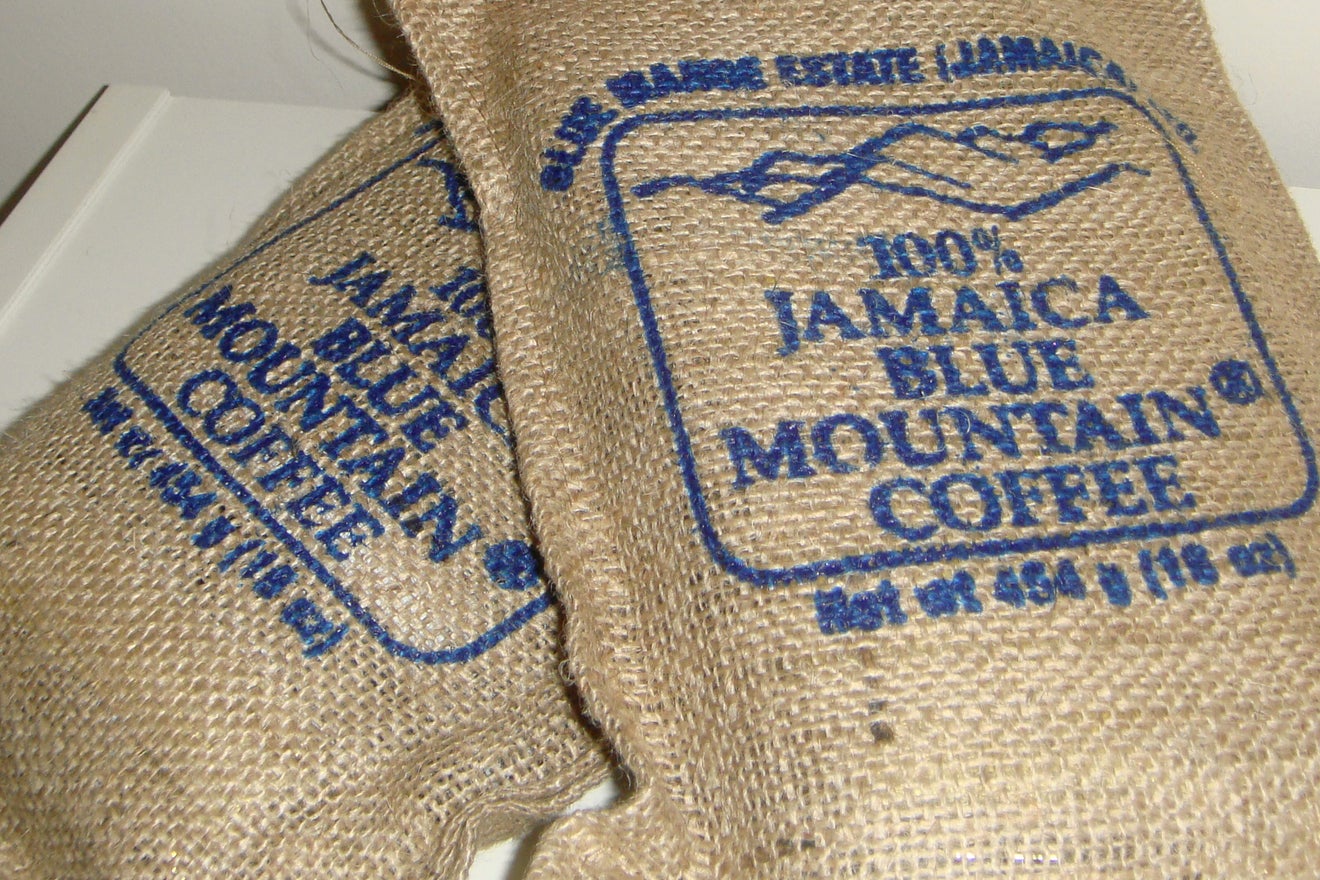
Samples Jamaica Blue Mountain Coffee
Island coffees, grown at lower altitudes tends to the best coffee, packed with flavour with a smoother finish and after taste. Lower yields tend to push up the price. The most expensive coffee in the world comes from St. Helena, a remote island off the West coast of Africa where Napolean was once held.
The key is to read the description carefully and to buy single origin coffee from roasters that will get the best from the beans (more on roasting later).
Not all single origin coffee makes for a particularly interesting drink in its own right, which is where blends come in. These typically consist of two types of coffee, picked for their complementary or contrasting flavours.
High-quality blends are created for the best taste, but you’ll find that most supermarket coffee is a blend, as it’s easier to keep the same flavour throughout the year; single-origin coffee is in shorter supply and has a more varied supply.
Blends often use a combination of Arabica and Robusta, with robusta’s strength working well here. I largely prefer single origin coffee but there are good blends out there, too.
Best coffee beans – Other types of coffee bean
The coffee plant produces a cherry, which contains inside the bean that’s washed and roasted. Most coffee cherries have two beans inside, touching via their flatter edge: this is similar to how peanuts come out of the shell.
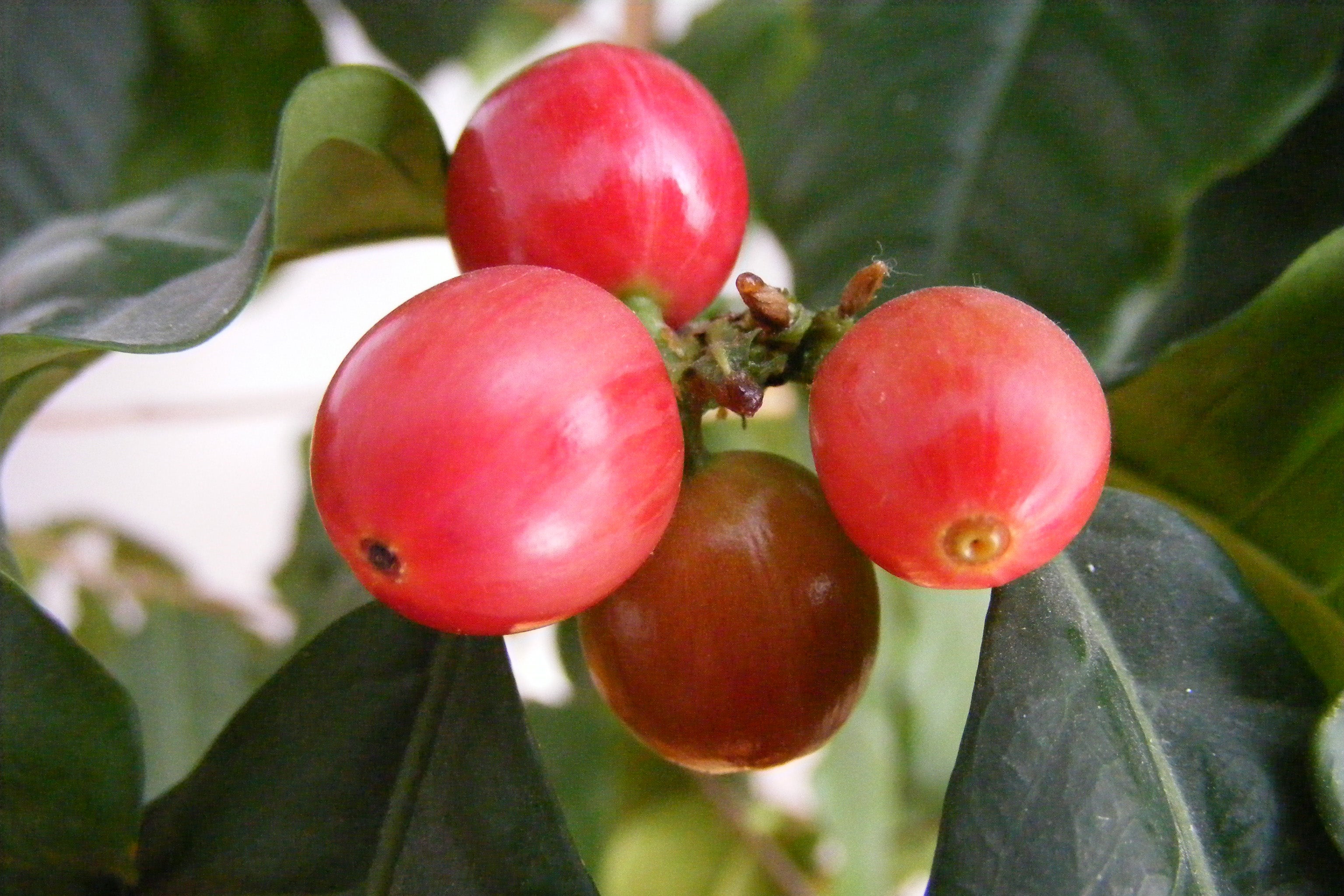
However, peaberry coffee has only a single bean inside the cherry, with a rounder pea-like look to it. The beans are typically smaller, but the rounded exterior means that they get more even distribution of heat when roasting for a superior taste.
The marogogype bean (the elephant bean) is a type of extra-large Arabica bean typically from Brazil. Poor soils deliver bland-tasting coffee, but there are some excellent examples of it, and this coffee is prized for its relative rarity.
The image below shows you the difference between the main types of bean: these are green, unroasted beans. On the left is the peaberry (Kenya AA), which has a rounder body and is slightly smaller than traditional coffee beans. In the middle is a Jamaican Blue Mountain bean, which is the typical size for most coffee beans. On the right is a Nicaraguan Maragogype bean, which can you can see is far larger than the other two.
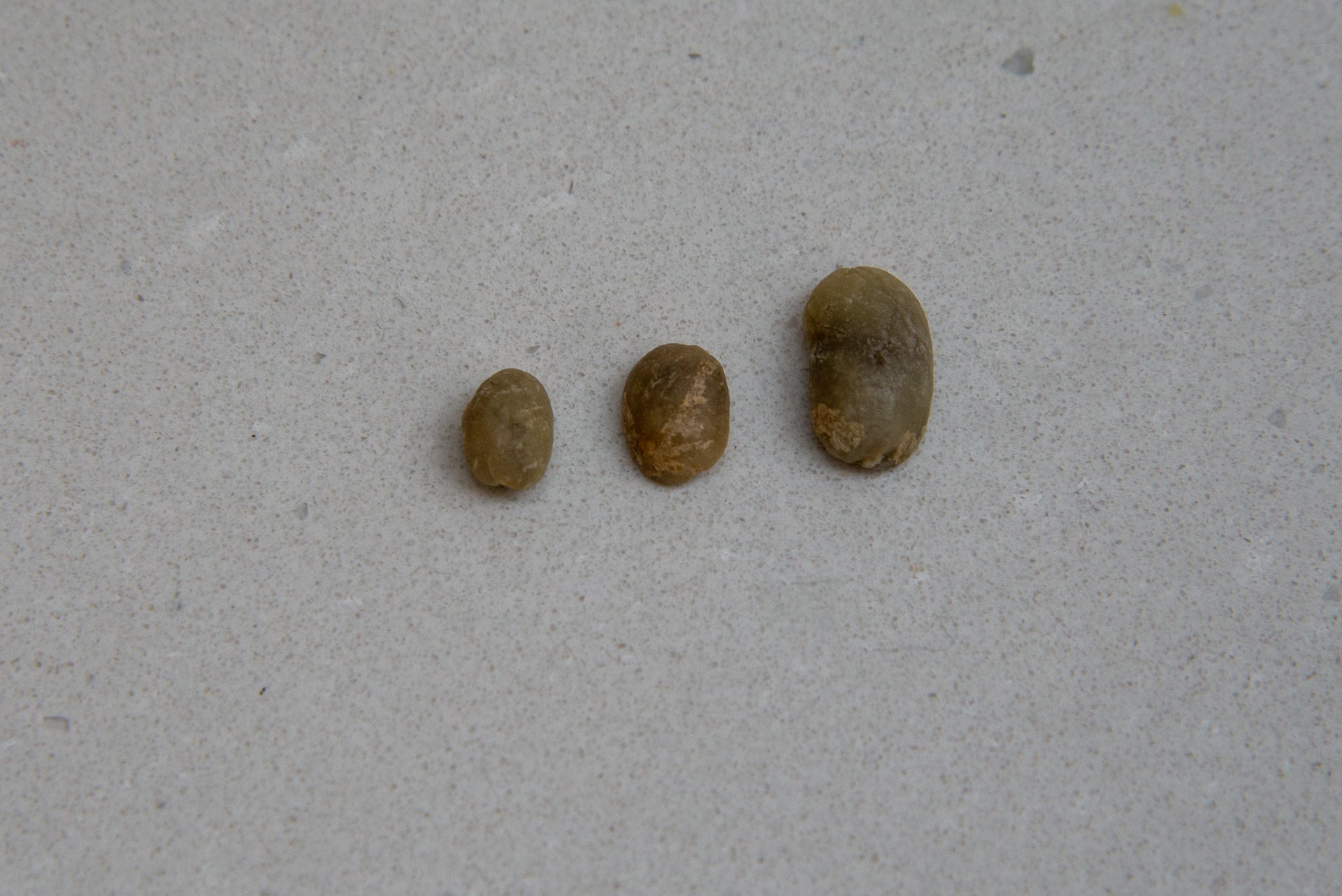
Best coffee beans – The effect of roasting on coffee
All coffee beans are roasted, turning the green beans into the brown ones that you’ll recognise. Throughout the roasting process, the beans take on a different colour as the sugars inside are caramalised.
There’s a misnomer that dark roasted coffee is stronger and has more caffeine. It does not. Dark roasted coffee tastes stronger, as the sugars have been caramelised and you get a burnt flavour coming through. Really, intensity is a better word to use.
As coffee roasts, it goes through two cracks: the point at which the bean makes an audible cracking noise, a bit like popcorn. The cracking noise is caused by the beans expanding: their moisture evaporates and the heat causes the bean to crack.
At first crack, you’re close to a finished product, with the beans losing their dry outer covering (silverskin or chaff). After this point and up until second crack, beans go from light to medium roast, developing their origin flavours. After second crack, the beans get very dark and oily, with the roast character coming through, giving that darker, more burnt and intense taste.
Below, you can see the coffee chaff after beans have been roasted. This is the silverskin that comes off of the beans during the roasting process.
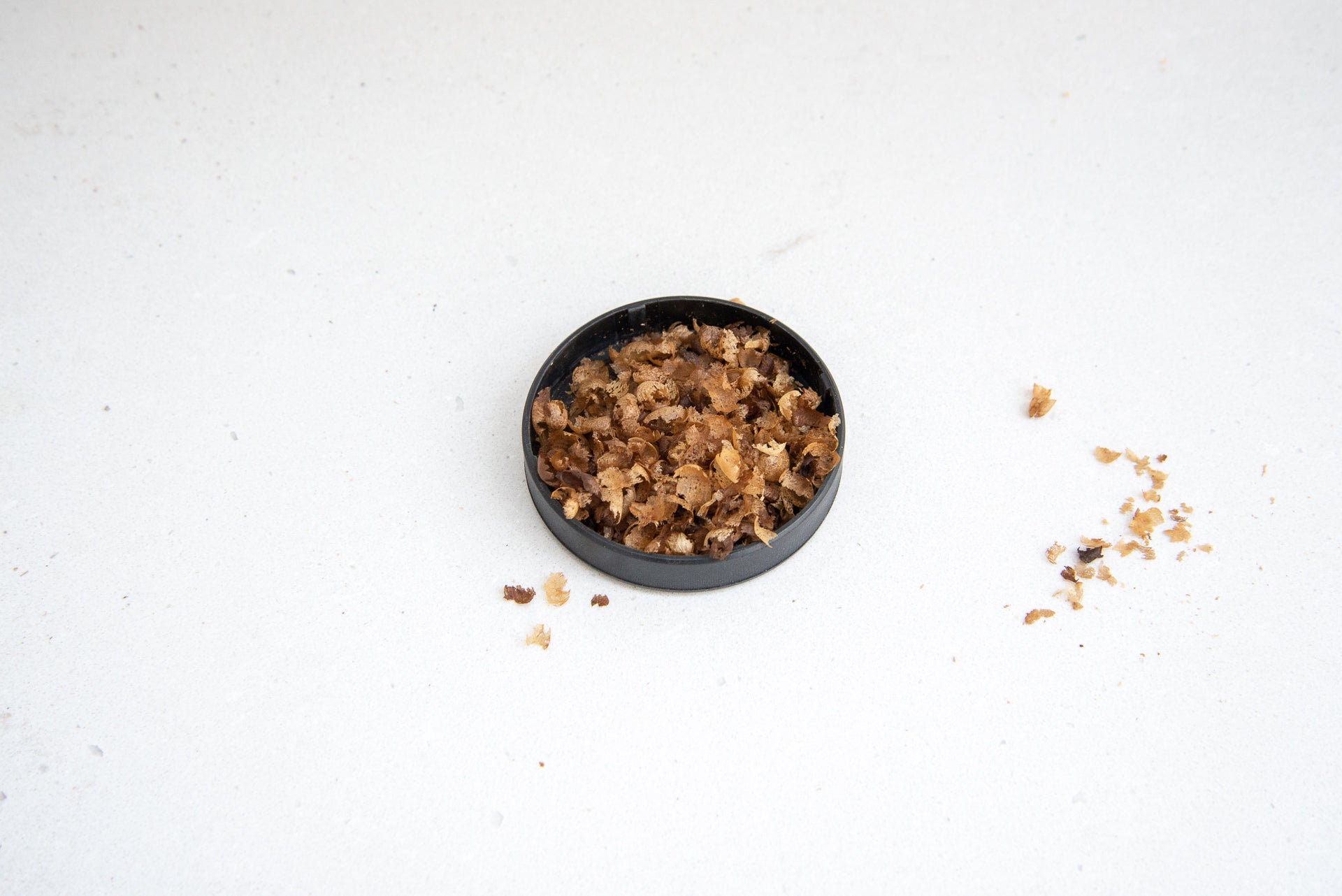
The roasting profile used affects the flavour and should be attuned to the beans. Typically, single origin beans work best with a medium-roast (somewhere past first crack and before second crack), as this preserves the single-origin flavours. Go too far, and all coffee beans start to taste the same. Cheaper beans are usually darker roasted, as a way of injecting more intense flavour into the mix.
For blends, a single roast can be used on all types of beans used. However, it’s more common to use a split roast where each type of coffee is roasted individually to bring out its best. The beans are then combined into the final blend.
Below, I’ve included some timelapse images of a home roaster in action, showing Peruvian Fair Trade beans going from green (far left), through to the final roast (just before second crack) on the right. As you can see in the images, the beans slowly shift through various shades before arriving at the final roast.

Best coffee beans – Which beans are right for me?
There’s no right or wrong answer to this question, as both the type of beans (or blend) and the roast used produces a massive variance in flavour and taste. What’s important is to experiment with flavour by trying different types of beans. I recommend going to a speciality roaster, as you’ll get fresher beans, roasted specifically for the type that you’ve chosen.
Supermarket beans will have been sat on a shelf for longer and don’t always brew well, even if you store coffee properly following my advice. Wherever you go, remember there’s a world of choice out there.


